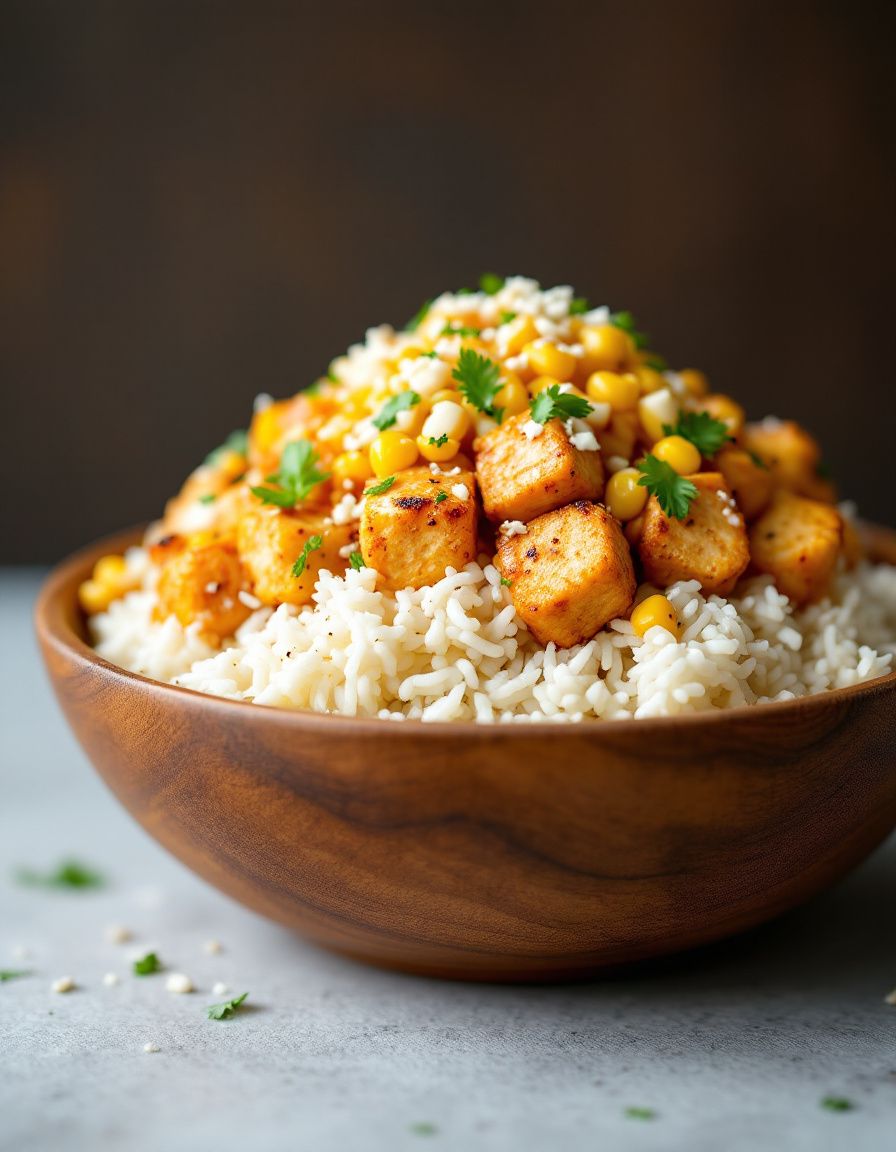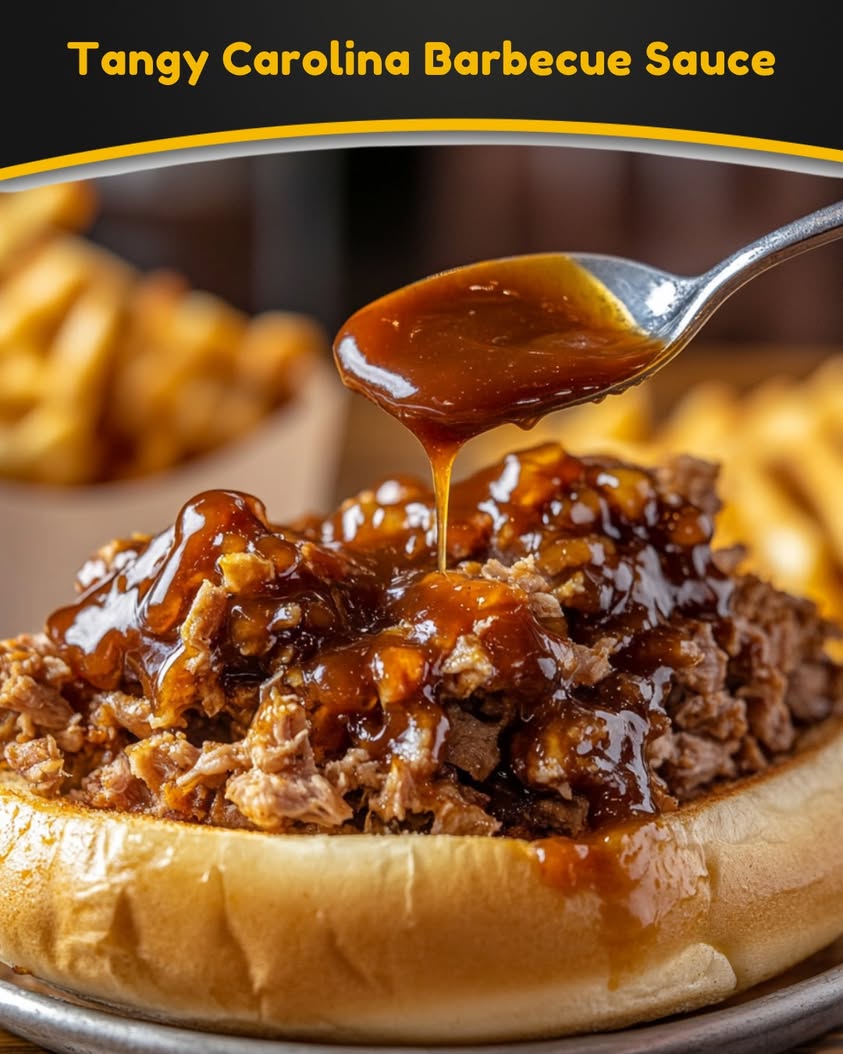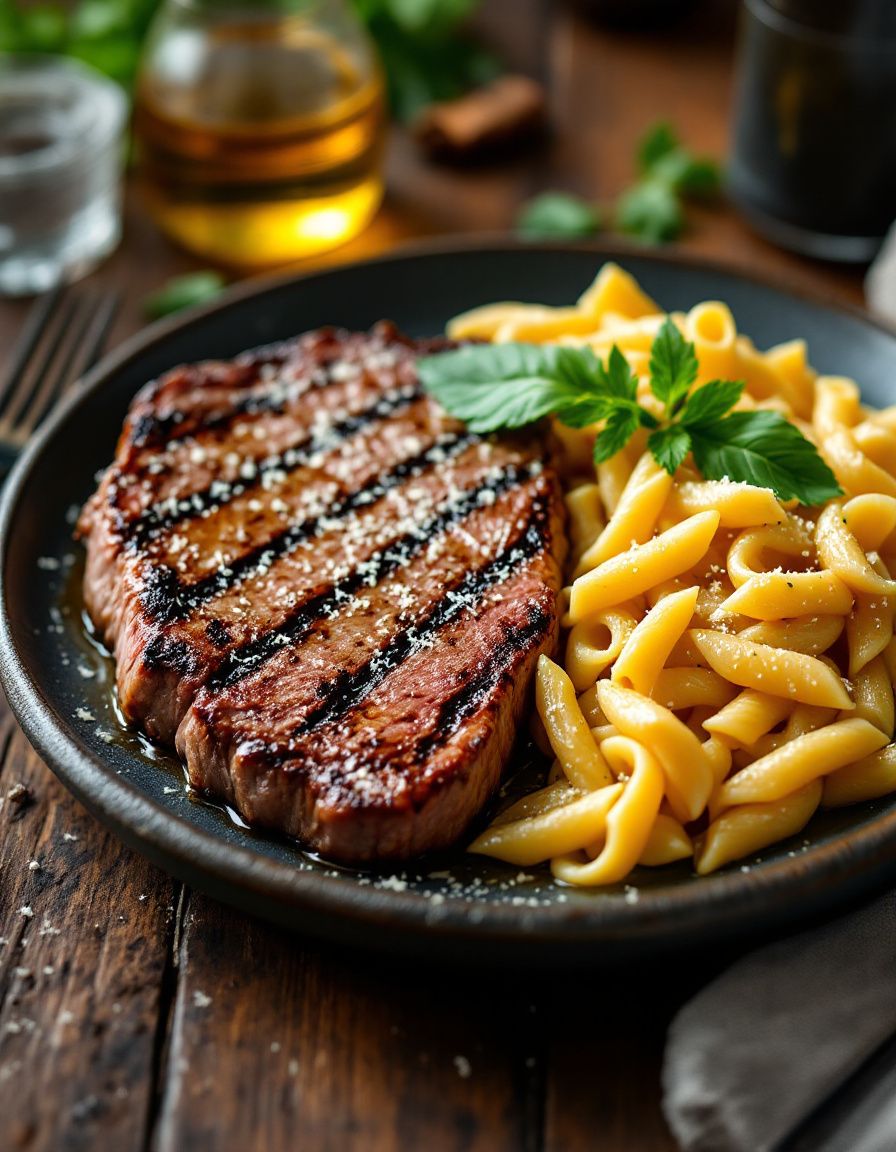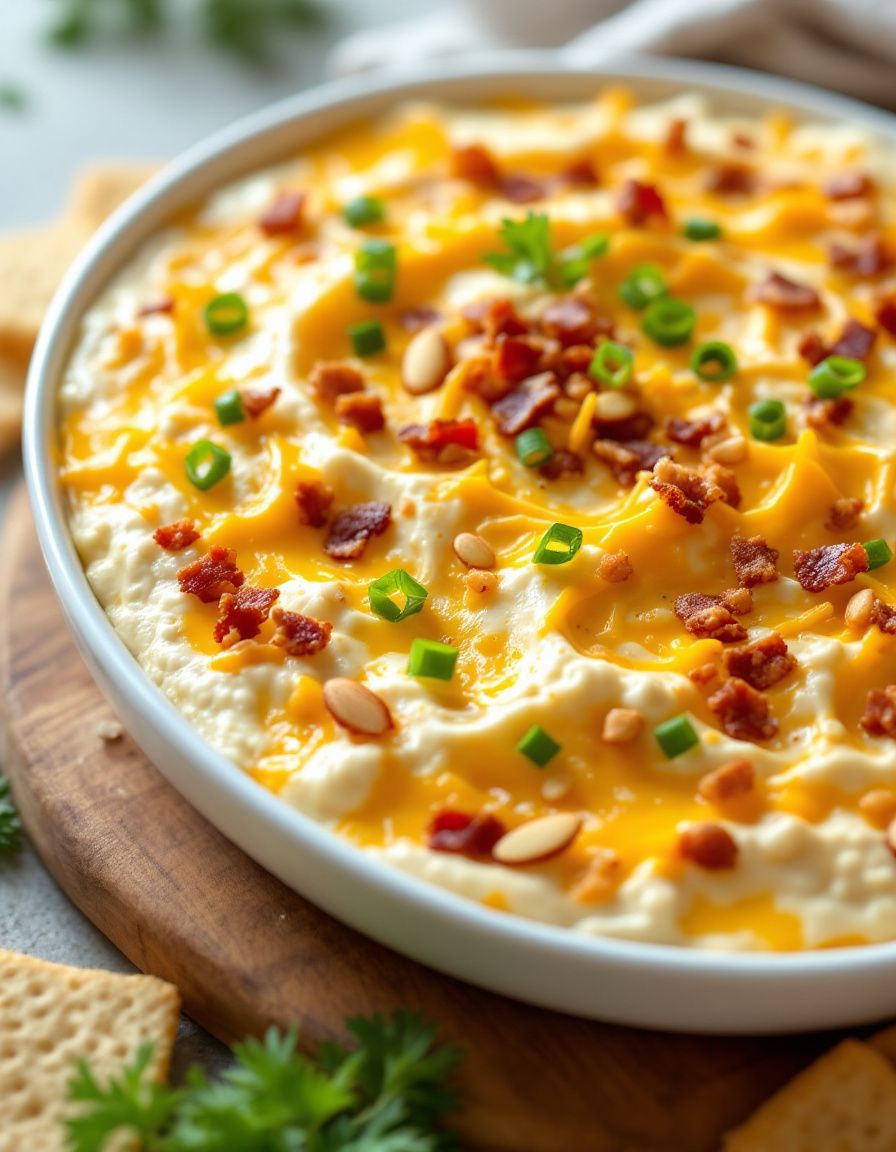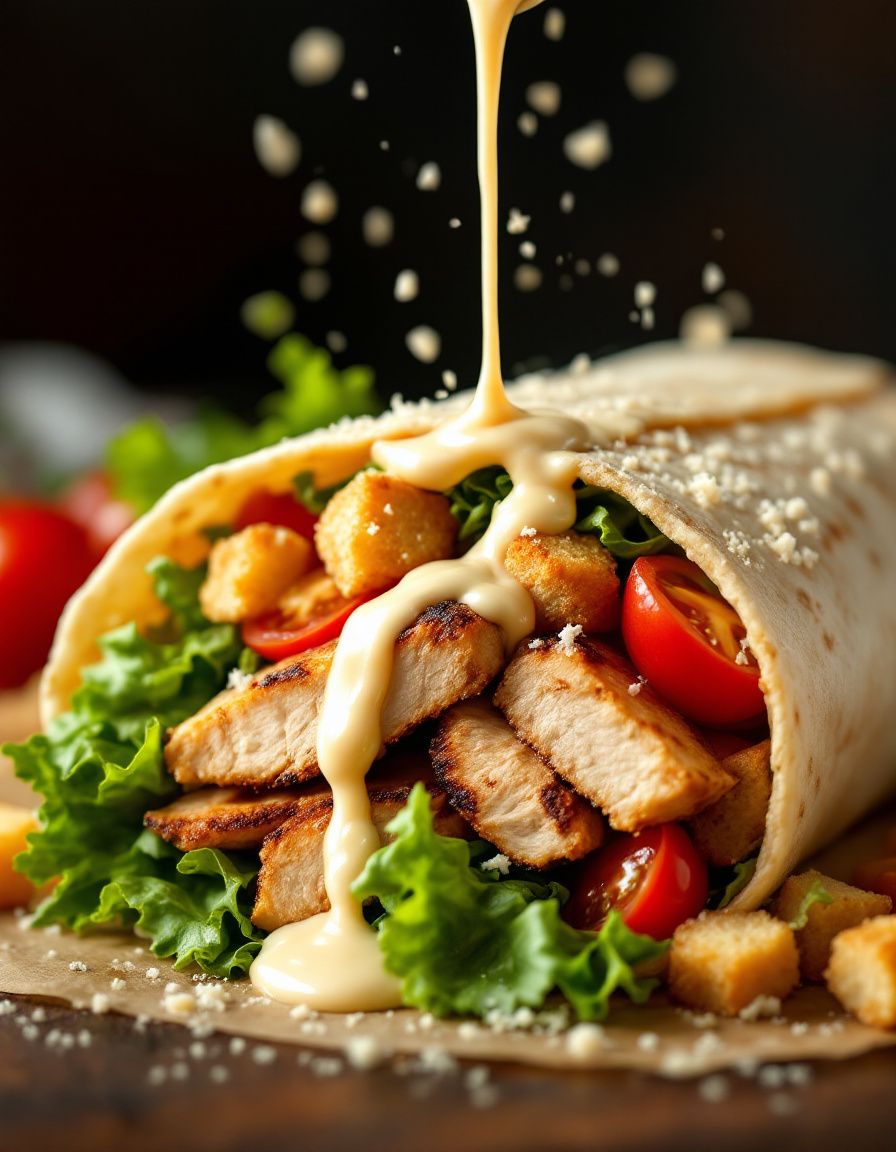Delicious Street Corn Chicken Rice Bowl: A Flavorful Fiesta in a Bowl
Welcome to the vibrant world of the Street Corn Chicken Rice Bowl! This delightful dish brings together the best of street food culture with the warmth of homemade comfort. Each bite bursts with flavors reminiscent of a sunny summer day spent at a bustling outdoor market. Juicy grilled chicken mingles with sweet corn, fresh herbs, and zesty toppings, creating a symphony of tastes that will transport your taste buds to the streets of Mexico. Perfect for lunch or a casual dinner, this bowl is sure to become a family favorite.
Imagine bright colors filling your plate: sunny yellow corn, tender green cilantro, and smoky grilled chicken, all resting on a bed of fluffy rice. The combination of textures—from the crunch of the corn to the softness of the chicken—offers a delightful experience that is not just a meal, but an event. Whether served on a busy weeknight or a laid-back weekend, the Street Corn Chicken Rice Bowl is sure to evoke smiles around the table.
Quick Recipe Highlights
- Flavor Profile: This dish combines sweet, smoky, and savory elements, with spices that create a perfectly balanced flavor sensation.
- Texture: Expect a pleasing contrast of juicy chicken, crunchy corn, and fluffy rice, delivering a delightful bite every time.
- Aroma: The fragrant notes of grilled chicken paired with cilantro and lime create an irresistible scent that fills your kitchen.
- Visual Appeal: The bright colors of fresh ingredients make this dish a feast for the eyes, perfect for impressing guests.
- Skill Level Needed: While requiring a few steps, the recipe is straightforward and accessible for home cooks of all levels.
- Special Equipment: All you need is a grill or grill pan and standard kitchen utensils to make this dish shine.
Recipe Overview
- Difficulty Level: Medium – This recipe features various cooking techniques but is manageable with a little preparation.
- Category: This bowl fits perfectly in meal prep, casual lunches, or family dinners, making it versatile for any occasion.
- Cuisine: Inspired by Mexican street food, this dish combines culinary techniques and ingredients commonly found in traditional recipes.
- Cost: The ingredients are budget-friendly, making this an economical choice for feeding a crowd.
- Season: Ideal for any season due to its fresh ingredients; however, it shines during summer when corn is at its sweetest.
- Occasion: Perfect for gatherings, picnics, or simple weeknight meals, bringing a fun twist to any dining experience.
Why You’ll Love This Recipe
This Street Corn Chicken Rice Bowl offers a harmonious blend of flavors and textures that captivate the palate. Juicy chicken grilled to perfection complements the sweet crunch of corn, while the bold spices create an exciting flavor profile that is further enhanced by fresh herbs. Each bite delights with its freshness, making it an appealing meal for all ages.
Convenience is key in cooking, and this dish requires minimal prep time, making it ideal for busy weeknights. Simply marinate the chicken while you prepare other ingredients, allowing the flavors to meld beautifully without much fuss. The recipe also encourages customization, as you can add or substitute your favorite vegetables or proteins.
From a nutritional perspective, this bowl packs a punch. Lean protein from chicken supports muscle repair, while corn offers fiber, vitamins, and minerals. The combination of healthy ingredients makes this not only a tasty option but also a wise choice for well-balanced meals.
This dish is perfect for social occasions as well! Serve it family-style, allowing everyone to build their own bowls, which encourages conversation and sharing. The vibrant colors and mouthwatering aroma make any meal feel festive and fun, perfect for gatherings with friends or family.
Lastly, the cost-effectiveness of the ingredients cannot be overstated. Many are pantry staples, and the dish can be easily scaled up or down based on your needs. Whether feeding a crowd or just a few, this recipe remains both affordable and delicious!
Historical Background and Cultural Significance
The origins of the Street Corn Chicken Rice Bowl can be traced back to the vibrant street food culture found throughout Mexico. Known as ‘Elote’, street corn is a staple delicacy that reflects the rich traditions and regional diversity of Mexican cuisine. The combination of grilled corn, spices, and creamy toppings embodies flavors that are synonymous with Mexican street food.
In many communities, vendors cooking over open flames create a social atmosphere, where locals and tourists alike come together to enjoy simple yet delightful meals. The tradition of eating corn, a native crop to the Americas, has deep historical roots, symbolizing sustenance and cultural heritage.
As culinary traditions evolve, recipes like the Street Corn Chicken Rice Bowl showcase how beloved street foods can be adapted for home cooking. Incorporating grilled chicken adds a protein-rich element, making it not only a dish meant for special occasions but also a feasible weeknight meal.
Regional variations of street corn often highlight local ingredients and spices, adding to the dish’s heritage and allowing it to resonate with diverse palates. This adaptation creates a sense of familiarity while promoting the joy that comes from sharing good food with others.
Ingredient Deep Dive
Grilled Chicken: A staple in many cuisines, chicken is a versatile protein that can be grilled, baked, or sautéed. It’s significant in many cultures, representing nourishment and celebration during various feasts. Nutritionally, chicken is an excellent source of lean protein and essential vitamins. When selecting chicken, opt for organic or free-range options for the best quality. Store it in the refrigerator and consume or freeze it within a few days to maintain freshness.
Corn: Native to the Americas, corn has a rich history intertwined with indigenous cultures. Sweet corn is harvested at its peak sweetness and provides a satisfying crunch, flavor, and versatility in cooking. Nutritionally, it is a great source of fiber, which supports digestion. Choose ears of corn with bright green husks and plump kernels. Store corn in the fridge and consume it fresh for the best flavor, or freeze for later use. If fresh corn isn’t available, frozen corn can be an excellent substitute.
Common Mistakes to Avoid
- Not seasoning the chicken adequately: Skipping or skimping on marinade can lead to bland chicken. Always allow it to marinate for a minimum of 30 minutes to enhance flavor.
- Overcooking the corn: Grilling corn for too long can lead to dryness. Grill just until there are charred spots for the best flavor.
- Using stale spices: Ensure your spices are fresh to maintain flavor intensity; old spices can diminish the dish’s overall taste.
- Neglecting to rest the chicken: Allowing the chicken to rest post-cooking helps retain moisture; slicing too early can cause loss of juices.
- Serving the bowl cold: This dish is best served warm; make sure all components are heated just before serving for optimal flavor.
- Substituting quick-cooking rice for longer grain rice: This can affect the texture and overall dish consistency; stick with traditional long-grain rice for better integration.
- Overcomplicating toppings: Keep it simple with fresh herbs and lime; too many toppings can overpower the dish’s primary flavors.
- Skipping the garnish: Failing to add a lime wedge or extra herbs can result in a completed dish lacking that finishing touch.
Essential Techniques
Grilling Chicken: This technique is vital as it enhances the flavor through caramelization and creates a smoky depth characteristic of grilled dishes. To master this, ensure your grill is preheated and well-oiled to prevent sticking. Look for restaurants or cookbooks that highlight grilling basics.
Cooking Rice: Perfect rice should be fluffy, not sticky. Rinse your rice before cooking to remove excess starch, and use a proper water-to-rice ratio. Pay attention to the simmering time and avoid lifting the lid too soon to ensure even cooking.
Pro Tips for Perfect Street Corn Chicken Rice Bowl
Add a splash of lime juice just before serving to brighten the flavors.
For extra crunch, top with crispy tortilla strips or fried shallots.
Experiment with spices in the marinade, such as smoked paprika or cumin, to enhance the flavor depth.
Allow the rice to steam off the heat after cooking for a perfect texture.
Consider grilling the corn alongside the chicken for an extra smoky flavor.
Make the dish ahead of time and assemble it fresh just before serving to keep ingredients crisp.
Utilize fresh herbs for garnish to add color and aroma.
If time allows, marinate the chicken overnight for deeper flavor.
Variations and Adaptations
For a regional twist, experiment with local spices or add black beans for a heartier option. Seasonal adaptations can include using ingredients like zucchini or bell peppers when they are at their peak. For dietary modifications, consider using grilled tofu in place of chicken for a vegan-friendly version. Add heat with diced jalapeños or use a chipotle crema to bring in smokiness and spice.
Serving and Presentation Guide
When plating, create a colorful presentation by arranging the ingredients in separate sections. Top with fresh cilantro and a lime wedge for visual appeal. Garnish with sliced radish for added color and a peppery crunch. Serve in a stylish bowl and consider pairing with a side of tortilla chips for a complete experience. Temperature matters; serve the bowl warm for the best flavor experience, and provide portion control tips by using measuring cups for balanced servings.
Wine and Beverage Pairing
Pair the Street Corn Chicken Rice Bowl with a crisp white wine, like Sauvignon Blanc or a light red like Pinot Noir, as their acidity complements the dish’s flavors. For a non-alcoholic option, consider sparkling water flavored with lime for a refreshing counterpart. If you love coffee, a light roast or iced coffee could complement the spices beautifully. Serve all beverages chilled to mirror the freshness of the dish.
Storage and Shelf Life
Store any leftovers in an airtight container in the refrigerator for up to three days. Ensure that the chicken and rice are kept separate to maintain texture. For longer storage, consider freezing the chicken separately from the rice to preserve quality. Avoid microwaving directly from the freezer; instead, let it thaw in the refrigerator overnight before reheating. Always check for signs of spoilage before consuming leftovers.
Make Ahead Strategies
Prep the chicken with the marinade up to 24 hours in advance for deeper flavor. Cook the rice a day ahead and store it in the fridge; reheat it just before serving. Grilled corn can also be made in advance and reheated quickly on the grill or microwave. Construct the bowls just before eating to keep the textures vibrant, but have all components ready to go for quick assembly.
Scaling Instructions
To halve the recipe, simply reduce the ingredients by 50%, adjusting cooking times as necessary. For larger gatherings, double or triple the ingredients as desired; be aware that cooking times may need to be adjusted if using larger pots or pans. Ensure you have adequate space for storage when scaling up, especially for leftovers.
Nutritional Deep Dive
This dish provides a balanced macro breakdown, with protein from chicken, carbohydrates from rice, and essential fats from any optional dressings. Micronutrient analysis reveals an impressive supply of vitamins A and C from corn and herbs, contributing to overall health. For those managing weight, portion control is key; consider serving sizes carefully to maintain moderation while enjoying this vibrant dish.
Dietary Adaptations
To make this dish gluten-free, ensure no soy sauce or wheat products are used. Opt for dairy-free cheese or skip cheese altogether for a vegan version. Substituting rice with cauliflower rice offers a low-carb alternative. For those following a paleo diet, use grilled chicken as the base, skipping the rice entirely while loading up on vegetables. Adjust ingredients based on dietary needs to ensure everyone can enjoy this delicious meal!
Troubleshooting Guide
If your chicken comes out dry, consider marinating longer or using a cooking thermometer to ensure the right internal temperature. For overly mushy rice, reduce the cooking time and let rice rest in a covered pot off heat. A lack of flavor might indicate insufficient seasoning in the marinade, so make adjustments accordingly. Temperature differences can be solved by ensuring all components are reheated properly before assembly.
Recipe Success Stories
Readers have shared their excitement about how well this dish fits family gatherings, with many altering spices and vegetables to suit their tastes. One reader mentioned substituting quinoa for rice and found amazing success with this healthy adjustment. Others delightedly shared photos showcasing their unique presentations, prompting community engagement that reinforces the beauty of cooking together.
Frequently Asked Questions
Can I use leftover chicken for this recipe?
Absolutely! Shredded or diced leftover chicken can easily be repurposed for this dish, making it a great way to reduce food waste while saving time.
What side dishes pair well?
Consider pairing with a simple salad or black beans to round out the meal. Fresh guacamole and chips also make excellent companions.
Can I substitute the chicken with tofu?
Yes, marinated grilled tofu works wonderfully as a vegetarian option. Just ensure it’s pressed well before grilling.
How can I make this recipe spicier?
Add diced jalapeños to the topping or mix chili powder in the marinade for a bolder kick.
Is this recipe gluten-free?
Yes, as long as you use gluten-free ingredients in dressings and marinades, this dish can be enjoyed by those with gluten sensitivities.
What are good substitutes for corn?
If corn is unavailable, consider using diced bell pepper or green peas for a similar texture and sweetness.
Can I grill the chicken indoors?
Yes! If you don’t have an outdoor grill, use a grill pan or a broiler for similar results.
How can I adjust the recipe for meal prep?
Prepare each component separately and combine them in individual containers to maintain freshness throughout the week.
Can I freeze this dish?
While the components can be frozen separately, it’s best to assemble the bowl fresh to preserve textures and tastes.
How do I know when chicken is done?
The chicken is safe to eat when it reaches an internal temperature of 165°F (75°C).
Additional Resources
Explore more recipes that highlight the bold flavors of Mexican cuisine for variety, such as tacos, enchiladas, or nachos. Check out technique guides on grilling and rice cooking for deeper culinary skills. Gain insights into ingredient selection with information on choosing seasonal produce for optimal freshness and flavor.
Join the Conversation
Share your culinary creations on social media under the hashtag #CornChickenRiceBowl and engage with fellow food lovers! Ask for suggestions or variations while sharing your own tips or photography advice to inspire others. The community thrives on creativity, so don’t hesitate to showcase your style and make this dish your own.
The Recipe
Street Corn Chicken Rice Bowl
Serves: 4
Prep Time: 15 mins
Cook Time: 30 mins
Total Time: 45 mins
Kitchen Equipment Needed
- Grill or grill pan
- Medium pot for rice
- Mixing bowl
- Knife and cutting board
- Cooking spatula
Ingredients
- 2 chicken breasts (about 1 lb), boneless and skinless
- 2 cups corn, fresh or frozen
- 2 cups cooked rice (white or brown)
- 1 tablespoon olive oil
- 2 teaspoons chili powder
- 1 teaspoon cumin
- Salt and pepper to taste
- Fresh lime wedges for serving
- Fresh cilantro for garnish
Directions
- In a mixing bowl, combine olive oil, chili powder, cumin, salt, and pepper. Add chicken breasts, ensuring they are well-coated. Marinate for at least 30 minutes.
- While the chicken marinates, prepare the rice according to package instructions and set aside.
- Preheat the grill (or grill pan) over medium heat. Grill chicken for about 6-8 minutes per side, or until it reaches an internal temperature of 165°F (75°C). Remove from grill and let rest before slicing.
- Grill corn on the cob for 10-15 minutes, turning frequently, until charred. Alternatively, if using frozen corn, sauté it in a pan until heated through and slightly charred.
- Assemble your bowls by layering rice, sliced chicken, grilled corn, and garnishing with fresh cilantro and lime wedges.
Recipe Notes
- You can substitute chicken with grilled shrimp or tofu for different protein options.
- Pair with avocado for extra creaminess.
- This dish is highly customizable; feel free to add more vegetables like bell peppers or onions.
